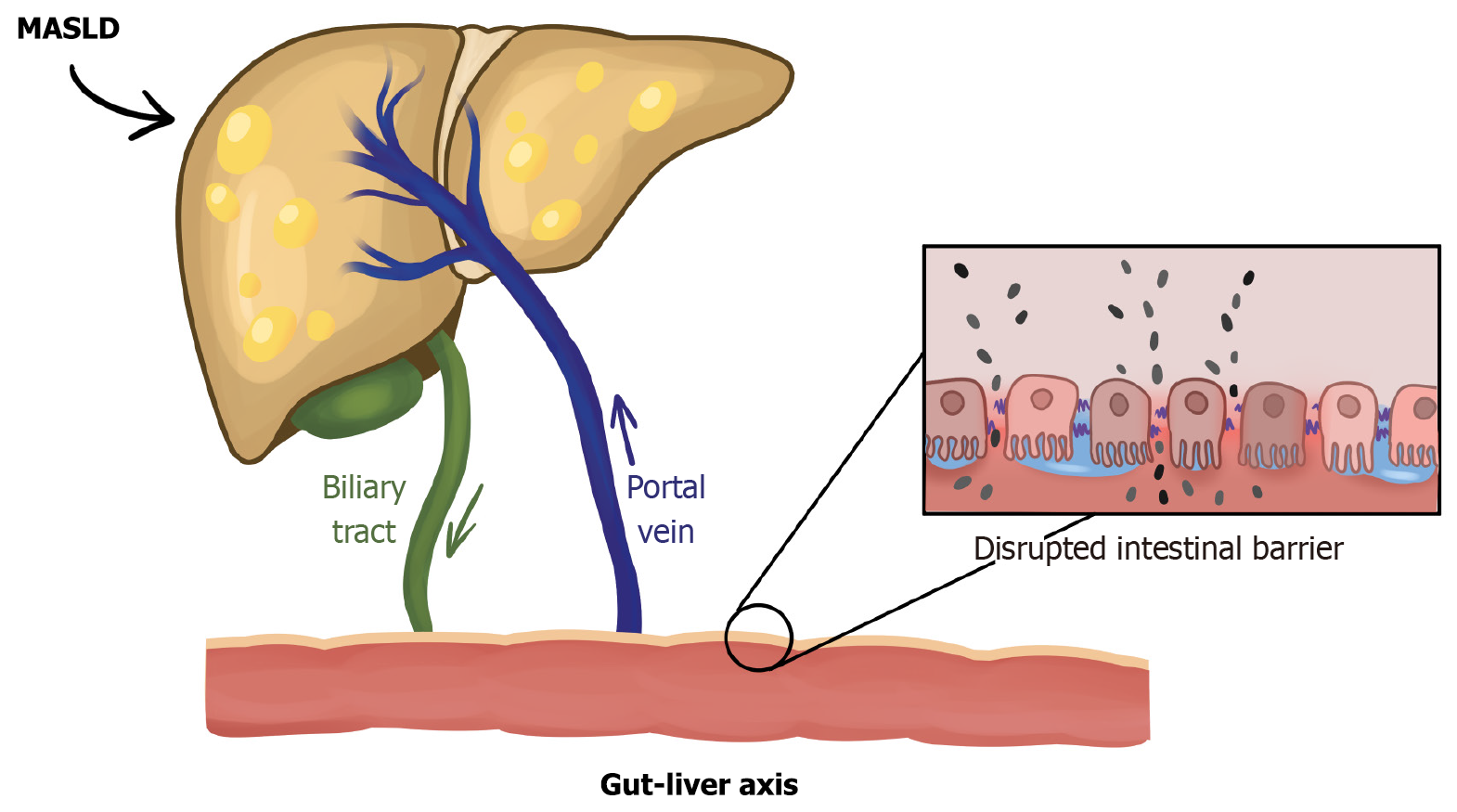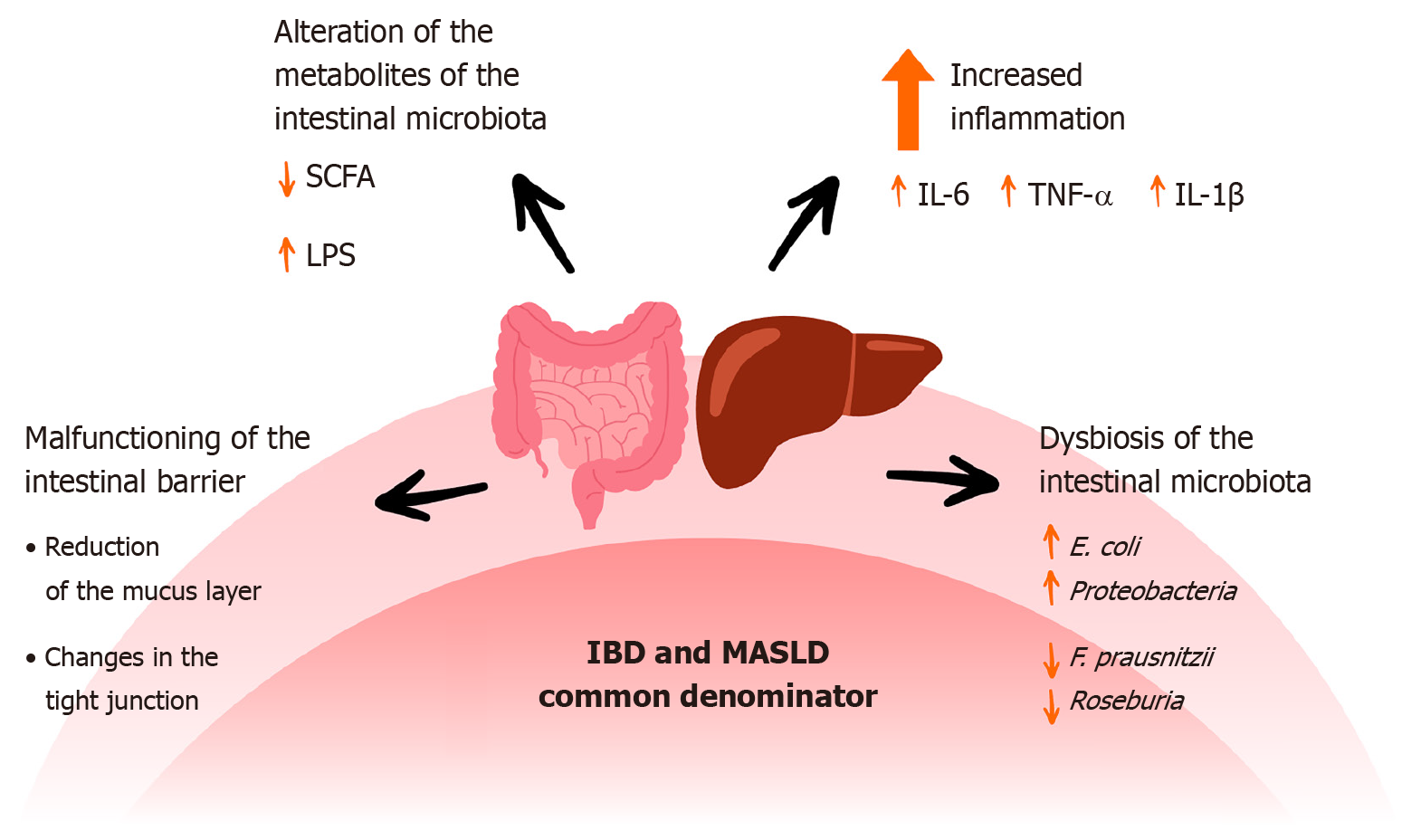Copyright
©The Author(s) 2025.
World J Gastroenterol. Oct 28, 2025; 31(40): 111375
Published online Oct 28, 2025. doi: 10.3748/wjg.v31.i40.111375
Published online Oct 28, 2025. doi: 10.3748/wjg.v31.i40.111375
Figure 1 Gut-liver axis.
A damaged intestinal barrier causes increased intestinal permeability. This, in turn, allows bacteria or their components (e.g., lipopolysaccharide) to pass from the intestine to the portal circulation, contributing to liver inflammation and the progression of metabolic dysfunction-associated steatotic liver disease. In addition, bile acids, produced in the liver and transported to the intestine via the bile ducts, play an important role in the bidirectional communication of the gut-liver axis. MASLD: Metabolic dysfunction-associated steatotic liver disease.
Figure 2 Disorders occurring in both inflammatory bowel disease and steatohepatitis associated with metabolic disorders.
SCFA: Short-chain fatty acid; LPS: Lipopolysaccharide; IL: Interleukin; TNF: Tumour necrosis factor; IBD: Inflammatory bowel disease; MASLD: Metabolic dysfunction-associated steatotic liver disease; E. coli: Escherichia coli; F. prausnitzii: Faecalibacterium prausnitzii.
- Citation: Sokal-Dembowska A, Ergan K, Jarmakiewicz-Czaja S. Role of gut microbiota in the development of metabolic dysfunction-associated steatotic liver disease in inflammatory bowel disease. World J Gastroenterol 2025; 31(40): 111375
- URL: https://www.wjgnet.com/1007-9327/full/v31/i40/111375.htm
- DOI: https://dx.doi.org/10.3748/wjg.v31.i40.111375














